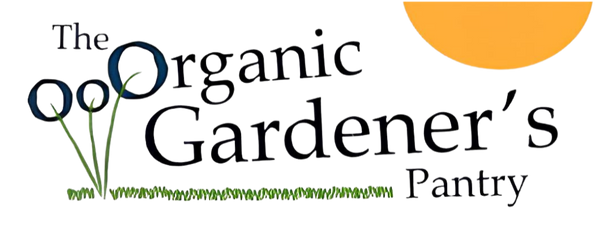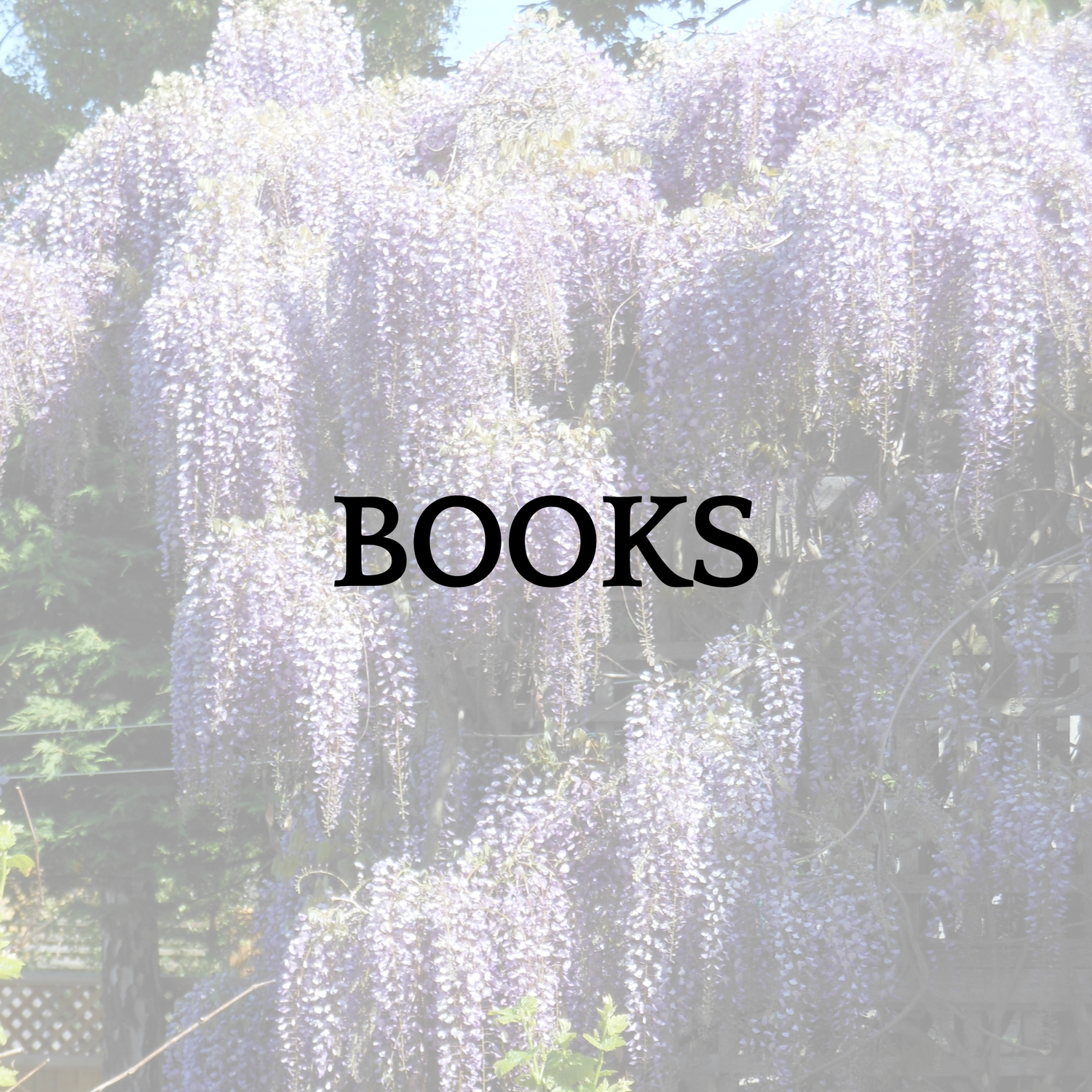Mycorrhizal Fungi
Mycorrhizal Fungi
Couldn't load pickup availability
Mycorrhizal fungi form mutually beneficial relationships with over 95% of common plant species.
They surround and even enter the roots of these plants, and provide nutrients such as phosphorus (and to a lesser degree, nitrogen), trace elements, and water to plants in exchange for carbohydrates.
In fact, some plants trade more than 50% of their carbohydrates with these fungi and other microbes. Fungal mycelium represents carbon drawn from the atmosphere and stored in solid form underground.
The fungi also greatly improve soil characteristics by improving soil structure and porosity. And, amazingly, they act as a line of defense, protecting the roots in the soil environment.
My clients and I have both seen huge benefits from using mycorrhizal fungi when planting. Gardeners have reported reduced plant losses when planting in less than ideal conditions.
The product is also helpful in improving the quality and health of a newly seeded lawn.
In soil that has recently been tilled/worked, compacted, waterlogged, drought-stressed, or treated with chemicals, mycorrhizae will be lacking. They are typically not present in imported topsoil or most potting soil mixes, either, and they cannot be multiplied in compost as they need a living plant host to survive.
In any of these scenarios, they need to be added back to the soil. These fungi are essential to optimum plant health and should be used whenever planting or seeding, propagating, or transplanting. The fungi will stay with the plant for life, so you only need to do this once!
Product Features
Product Features
Mycorrhizae Categories:
There are two main categories of mycorrhizae relationships:
- Endomycorrhizal fungi (arbuscular mycorrhizal fungi) form relationships with over 90% of plants, including ornamental and fruit trees, shrubs, perennial flowers, annuals and many vegetables, and turf grasses. Interestingly they do not form fruiting bodies (mushrooms), but instead release their spores directly within the soil.
- Ectomycorrhizal fungi form relationships with fewer plant species, but some of them are quite common, such as hedging cedars, other conifers, and many hardwood trees.
This short mycorrhizae list (pdf) shows many common plants forming relationships.
And here’s a much more detailed mycorrhizal list (pdf) if you are looking for something in particular.
Please note that there are a few plants that do not respond to either endo or ectomycorrhizal fungi, namely members of the Brassica family (broccoli, Brussels sprouts, cabbage, cauliflower, collards, kale, and rutabaga); also, beets, mustard, spinach, and orchids. Although members of the Ericaceae family (rhododendron and azalea, blueberry, cranberry, heath and heather, huckleberry, lingonberry) are now known to have fungal partners, they do not partner with the fungal species in Root Rescue. As far as I know, there are currently no ericoid mycorrhizal fungi products commercially available in Canada.
Mycorrhizal Fungi Products
Endo/Ectomycorrhizal Fungi
Root Rescue is a concentrated wettable powder containing eighteen different species of Glomus, Gigaspora, Rhizopogon, Pisolithus, Laccaria, and Suillus fungi.
This is a combination product that benefits both those plants that partner with endo-mycorrhizae (see above), and also covers those woody plants that prefer ectomycorrhizal fungi (or take both endo and ecto), such as:
Most conifers including hedge cedars, Douglas Fir, true fir, hemlock, larch, pine, and spruce; as well as alder, arbutus, beech, birch, chestnut, eucalyptus, filbert/hazelnut, hickory, linden, oak, pecan, poplar, and willow.
Root Rescue offers larger units and case discounts — contact me if you’re a commercial grower.
Application
Application
The best time to apply mycorrhizal inoculant is at the plant production stage, but since your plants probably didn’t have that done, the next best time is at planting/seeding/sodding. This will promote contact between the fungi and plant roots.
Rub the product directly on the root ball if possible, or sprinkle in the planting hole. You can also mix the powder with tepid water and apply the liquid. Bare roots can be dipped into the liquid. For seed, mix the dry powder with the seed before spreading. For sod, sprinkle it dry or spray the liquid on the soil right before laying the sod, or even better, right on the bottom of the sod (I know that can be time-consuming). You could spray it on after as well.
The other choice would be to apply the mycorrhizal fungi products to existing landscapes. For trees and shrub beds, grab a garden fork and poke a lot of holes around the feeder root zone, away from the trunk. This will help both powder or liquid to enter the soil and get to where it’s needed.
For turf, it is best to do this right after aerating so that more of the spores get down to the roots. Otherwise, it can be watered in, but will not be as effective on heavy clay or very compacted soils.
Be sure to keep agitating/stirring the liquid as the powder tends to settle at the bottom. Mixing several smaller batches rather than using the entire amount at once helps ensure even distribution.
The powder can be mixed with other microbial products and organic fertilizers and applied at the same time, although there is no benefit to foliar feeding with mycorrhizal fungi products, as the spores need to touch the roots.
Application rates for powdered endo/ecto (Root Rescue)
How much do you need? Generally, use 4.5g (1 teaspoon) of powder in 7.5L of water (2 gallons, the volume of a standard watering can). For a “tree-planters batch”, mix 13.5g (1 tbsp) in 19L (5 gallons) of water.
The 45g package makes 75 liters (20 gallons) and can treat 40 one-gallon plants or two large trees.
The 180g package yields 300 liters (75 gallons) of solution and can treat 160 one-gallon plants or eight large trees (or a few hundred seedlings).
The 450g package mixes with 750 liters (200 gallons) of water for 400 one-gallon plants or 20 large trees, and the 900g size gives you double those amounts.
If the amounts of water recommended by the manufacturer seem high, this is because you would ideally saturate the rootball and also drench the soil used for backfilling the planting hole.
Applying the liquid:
- 0.7 liters per cutting
- 1.2 liters per 4″ pot
- 1.87 liters (1/2 gallon) per 1gal container
- 3.75 liters (1 gallon) per 2gal container
- 37.5 liters (10 gallons) per large shrub or tree
How long does it keep? Store tightly sealed, dry, cool and dark. After the best before date, Root Rescue is still 90% viable for another full year if stored correctly, so just use 10% more for normal effectiveness. Mix and use only what you want to apply the same day. Diluted mixed product does not keep long.
Testimonials
Testimonials
“The endomycorrhizal fungi that Janice and I got from you last month has been incredibly effective. I’m particularly surprised by how quickly roses react to it. After inoculation, the roses I treated dropped all their diseased leaves and flushed out in new healthy growth. I’ve treated my own plants and several client ‘rose gardens’ now with the same encouraging results.”Kathy, Victoria, BC
Share
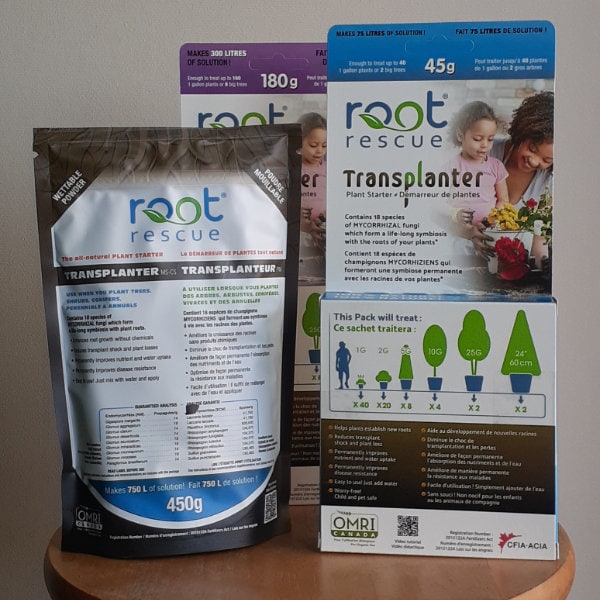
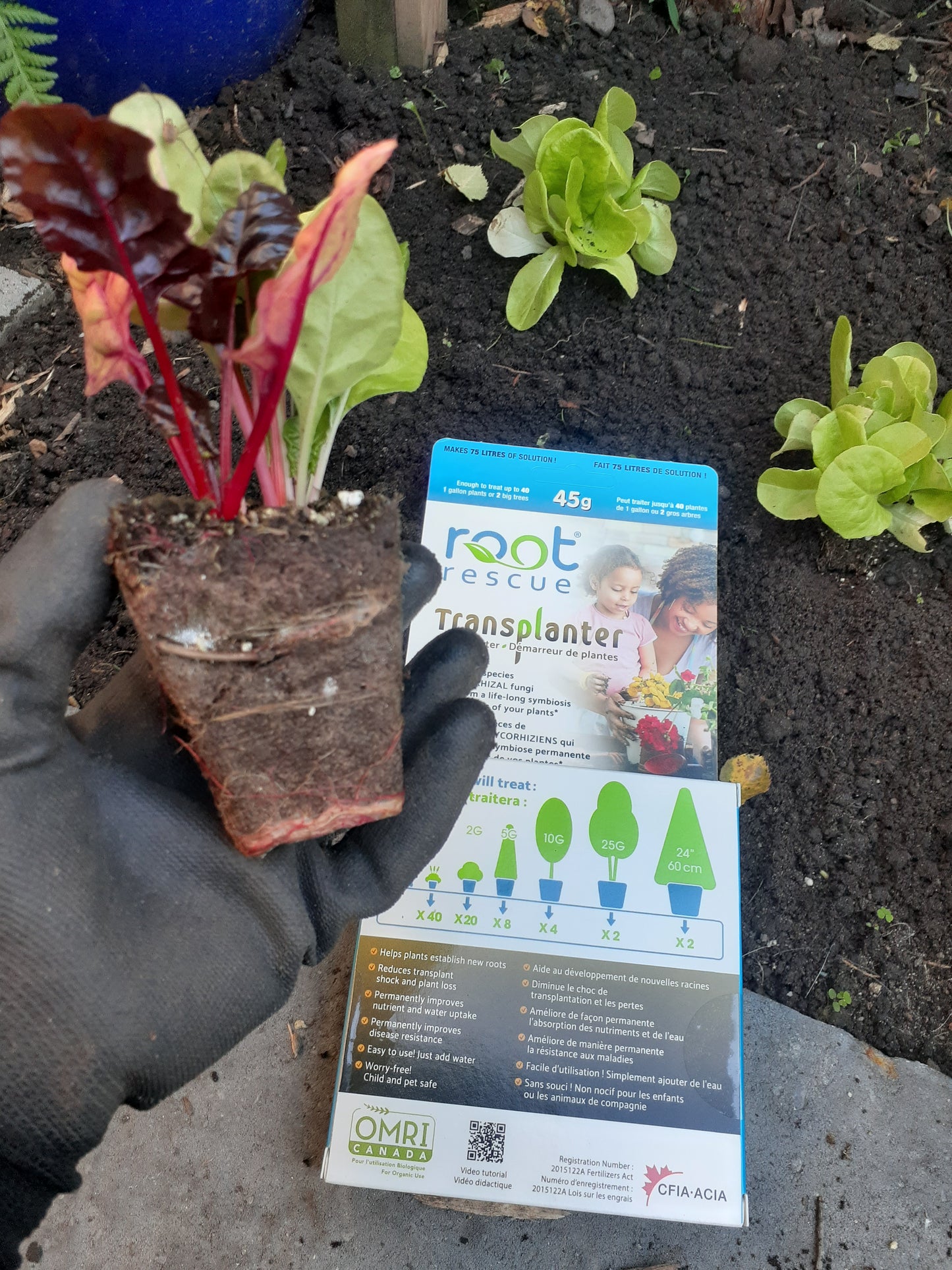
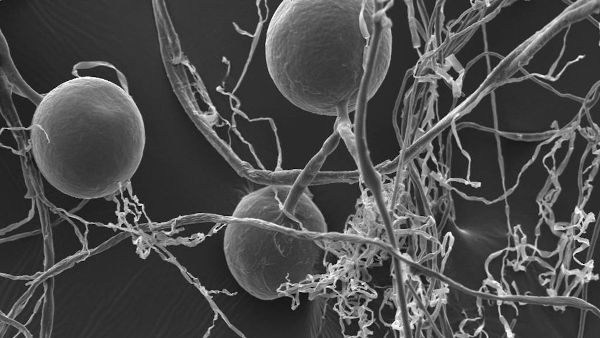
FAQ
Shipping & Local Pick Up
FLAT RATE SHIPPING + LOCAL PICK UP
Flat Rate Shipping across Canada with either Canada Post, Purolator or UPS
| Purchase ($) | Shipping ($) |
| <55 | 15 |
| 55-74 | 20 |
| 75-124 | 25 |
| 125-199 | 30 |
| 200-399 | 40 |
| 400-699 | 55 |
| 700+ | 70 |
LOCAL PICK UP, VICTORIA BC
If you prefer to pick up your order in Victoria, BC, just choose the ‘Pick Up’ option during checkout.
Online order pickups are now at Gardener’s Kit at 169 Langford Street — very close to my old shop in Vic West!
You will receive a pick up confirmation when your order is ready. Click Here for driving directions + Gardener's Kit store hours
Ideally, please allow one business day for order processing. If you need something the same day, or you’d like to meet and chat, give me a quick call or send a text before coming over (250-216-3733) and I will try my best to be ready for you.
What’s the difference between EM and Activated EM? Can I keep re-activating my Activated EM?
I wish! Sadly EM is a bit different from yogurt or sourdough making. The first activation will turn out very closely similar to the mother culture, but with subsequent activations the intricate balance of microbe species and numbers will start to shift, and the effectiveness will decrease. I only ever use fresh mother culture when activating.
EM mother culture can be used the same way as Activated EM, but for economic reasons most people buy it to make their own activation. If you’re new to gardening with EM and you just want to try it out, or if you don’t want to spend the time and effort of activating, then go for the already activated product.
What’s the difference between EM/AEM and Compost Tea?
While EM, AEM, and Compost Tea are made differently, they have similar benefits and compliment each other beautifully. For a comparative summary of these products, see the March 2011 Newsletter.
Can I combine products for easy, all-in-one application?
Yes, almost all products are compatible. The only exception is with fish and sea minerals, which are better applied separately. Keep in mind that dilution rates are different for each product, and try to apply right away after mixing.
Do I need a sprayer?
For soil and compost application, or treating small lawns, a watering can is just fine. For application to foliage, finer droplets are advantageous. You can use a spray bottle, a hose-end sprayer, or a hand-held or backpack sprayer. The wand of a sprayer will help greatly with getting to the underside of leaves. Whatever container you use, be sure it never held any pesticides or liquid synthetic fertilizer.
How do I store the products, and how long do they keep?
Store all products at a cool room temperature, with the lid on tight, and out of direct light. Store pure and undiluted – once products are mixed or diluted with water, they go off quickly. EM mother culture keeps up to two years, activated EM six months or longer. Mycorrhizal fungi, liquid fish, liquid kelp, and sea minerals are good for about a year.Humic acids and molasses can be stored almost indefinitely.
more in The Pantry...
-
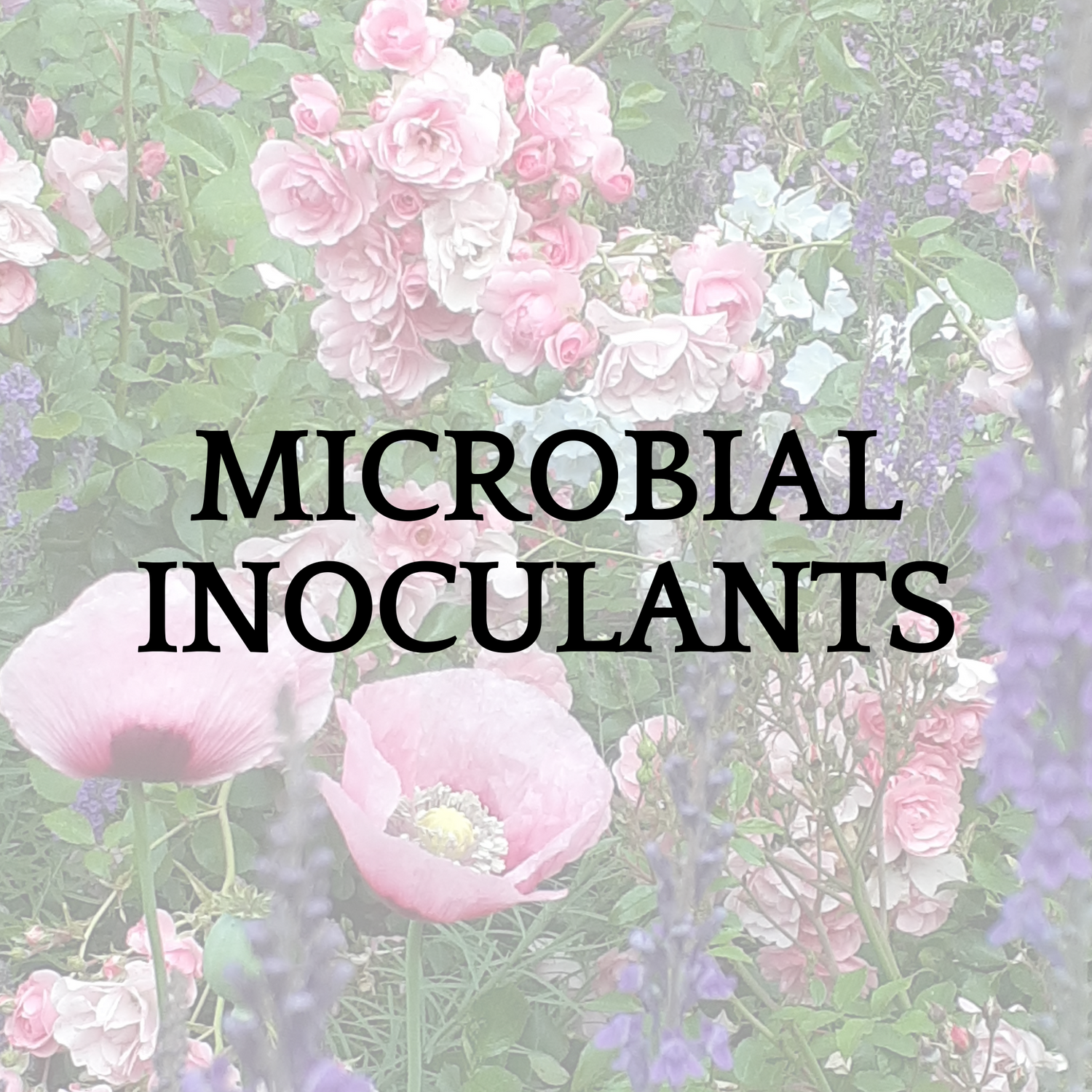
Microbial Inoculants
Microbial inoculants aren’t organic fertilizers, but bacteria, fungi, and protists play an...
-
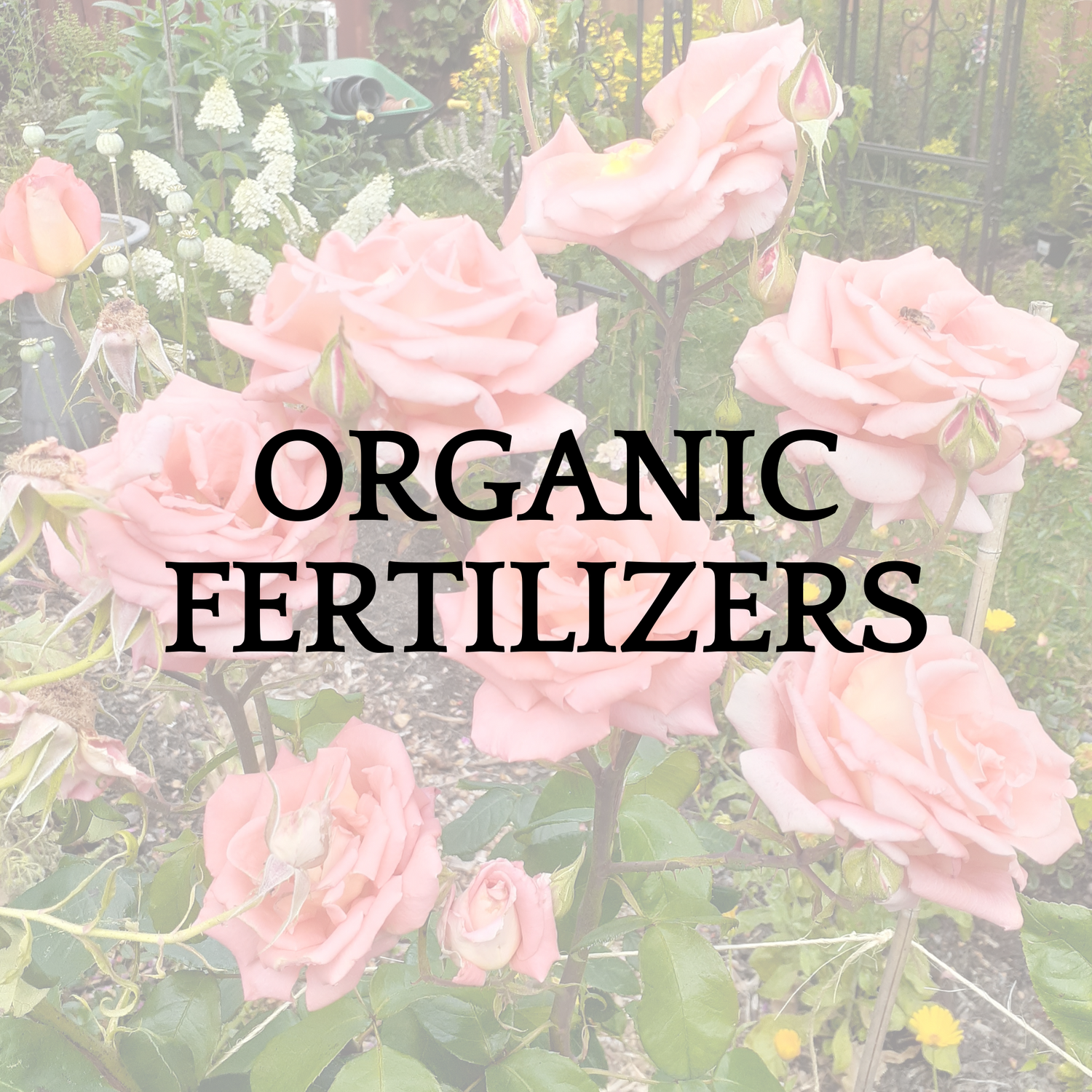
Organic Fertilizers
These organic fertilizers could also be called “biostimulants,” i.e. materials that stimulate...
